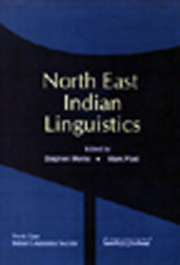Book contents
- Frontmatter
- Contents
- Introduction
- Foreword
- Phonology
- 1 Kurtöp Phonology in the Context of North East India
- 2 Working with Tones in North East India – The Tonal System of Numhpuk Singpho, Assam
- 3 Tonality and the Analysis of Sub-Minimal Words in Ao
- 4 Change with Continuity in the Boro-Garo Languages
- Lexicon
- Morphology, Syntax, and Semantics
- Language Description and Language Endangerment
4 - Change with Continuity in the Boro-Garo Languages
from Phonology
Published online by Cambridge University Press: 26 October 2011
- Frontmatter
- Contents
- Introduction
- Foreword
- Phonology
- 1 Kurtöp Phonology in the Context of North East India
- 2 Working with Tones in North East India – The Tonal System of Numhpuk Singpho, Assam
- 3 Tonality and the Analysis of Sub-Minimal Words in Ao
- 4 Change with Continuity in the Boro-Garo Languages
- Lexicon
- Morphology, Syntax, and Semantics
- Language Description and Language Endangerment
Summary
Introduction
The Boro-Garo languages of northeastern India form one of the most clearly bounded and longest recognized subgroups of Tibeto-Burman. The group includes Boro, Dimasa, Tiwa, Rabha, Koch, and Deuri in Assam; Garo, Atong and the soon to become extinct Ruga in the Garo Hills; and Kok Borok to the south in the state of Tripura. The fact that these have been recognized as forming a subgroup at least since the publication in 1903, of Volume III Pt. II Specimens of the Bodo, Naga, and Kachin Groups of Grierson's Linguistic Survey of India testifies to the obvious similarities among these languages. Nevertheless, a comparative study of the Boro-Garo languages shows that many of their features are in fact, subject to considerable change. The similarities that we find in the present languages are, in part, the result of reintroduction of features that had been lost at an earlier stage of the language, rather than shared retentions. It seem almost as if the forces for change that introduce diversity are counterbalanced by other forces that push the languages back in direction from which they came.
Borrowing
Some changes are undone by simple borrowing. A clear example is the reintroduction of syllable initial l- in Garo after an earlier l- and r- had fallen together as r-. In Boro and Tiwa, r- and l- contrast as syllable initial consonants, but the Garo cognates of these words always have -r, never l-: Tiwa and Boro lán- Garo ra?-an ‘take away’.
- Type
- Chapter
- Information
- North East Indian Linguistics , pp. 65 - 72Publisher: Foundation BooksPrint publication year: 2008



